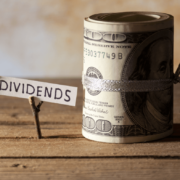TAXES ON DIVIDENDS
On December 22, 2017, The Tax Cuts and Jobs Act was signed into law. The information in this article predates the tax reform legislation and may not apply to tax returns starting in the 2018 tax year. You may wish to speak to your tax advisor about the latest tax law. This publication is provided for your convenience and does not constitute legal advice. This publication is protected by copyright.
Dividends received by an individual shareholder from domestic corporations (and certain foreign corporations) are treated as net long-term capital gain for purposes of applying the long-term capital gains tax rates. This means qualifying dividends are taxed at 0% for those in the 10% and 15% tax brackets, 15% for taxpayers in the 25% through the 35% brackets and 20% for taxpayers whose tax bracket is 39.6%. Capital losses cannot offset the dividend income for purpose of the tax computation. To qualify for the lower rate, the stock on which the dividends are paid must be held for at least 60 days during the 120-day period that begins 60 days before the “ex-dividend” date. Dividends on stock held in a retirement plan or traditional IRA will not benefit from the new lower rates; distributions from these plans continue to be taxed at ordinary income rates.
Investors with investments both in and out of tax qualified accounts should consider putting more of the interest-generating portion of their portfolios, which would be subject to tax at ordinary income rates in any event, into their 401(k)s and IRAs, and more heavily weight the investments intended to generate preferential capital gain and dividend income in their taxable accounts.








Leave a Reply
Want to join the discussion?Feel free to contribute!